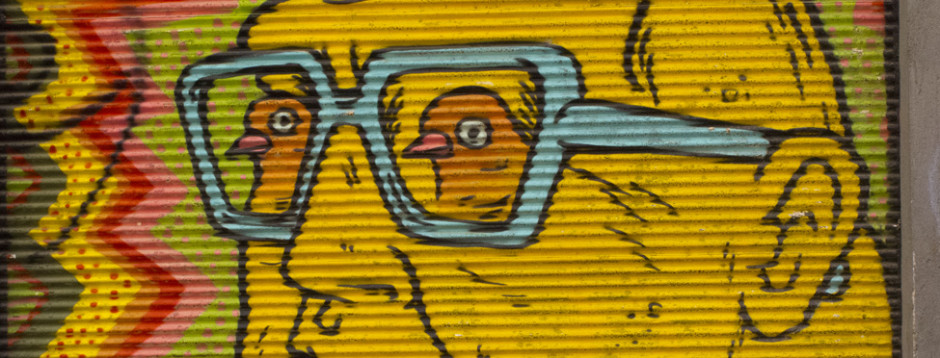The dark brooding men that are hanging on the walls at Steve Harvey Fine Art Projects these days are a powerful presence in a tiny gallery. The exhibition ”Lester Johnson: Dark Paintings” consists of six paintings and two drawings. Small in number, they inhabit the gallery with a strength that is ready to burst the walls.
These paintings, executed in the early 1960’s, are masterpieces of Johnson’s oeuvre. The marriage here between Johnson’s use of the materials and the subject matter shows the artist at his best. Thick layers of impasto oil paint are delicately, but urgently, scratched through to reveal the somber portrait of a man (Dark Portrait 1965). Bits and pieces of architecture behind him, he stares impassively at the world. As you move around the painting, light catching on the impasto reveals new nuance and depth within the painting’s surface.
In contrast, the works Three Transparent Heads, Untitled #7 and Untitled, Head 1961 work with thinner layers of oil paint, veils revealing and hiding the figures inside. The luscious drips and strong gestural sweep of the paint elegantly connects this work to that of Johnson’s contemporaries working within the Abstract Expressionist movement. The play between matte and shiny surfaces creates a dimensionality that is both beautiful and emotionally raw. Most of the works in the show are black, blue and dark green, a disciplined and restrained palette that adds to the sense of monumentality and strength that these pieces convey. Beyond the literal subject matter, these paintings reveal a deeply felt love for the act of painting–an eloquent love letter to painting. There is joy within the “darkness.”
During the time that these paintings were made Johnson inhabited a studio directly across the street from The Bowery Mission, a long time refuge for homeless men. To this day, in the increasingly gentrified LES, one can see long lines of somber men lining up for a hot meal or a place to sleep. Clearly this daily ritual outside his studio window influenced the subject matter of the Dark Paintings. But to me they also refer back to an earlier 20th century vision- that of bread lines during the Depression of the 1930’s. Johnson, old enough to have seen and absorbed this history into his memories appears to have connected the turbulent 1960’s with the equally turbulent 1930’s. Either way he created a striking body of paintings that refer simultaneously to both subject and process, and in so doing, stir the soul.

Lester Johnson- Three Men in Hats



















